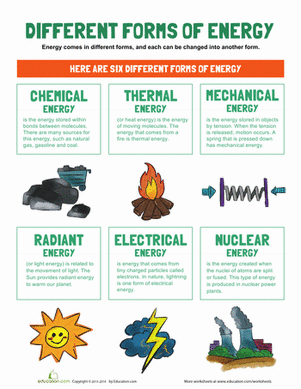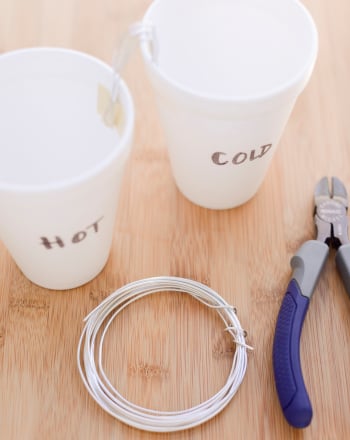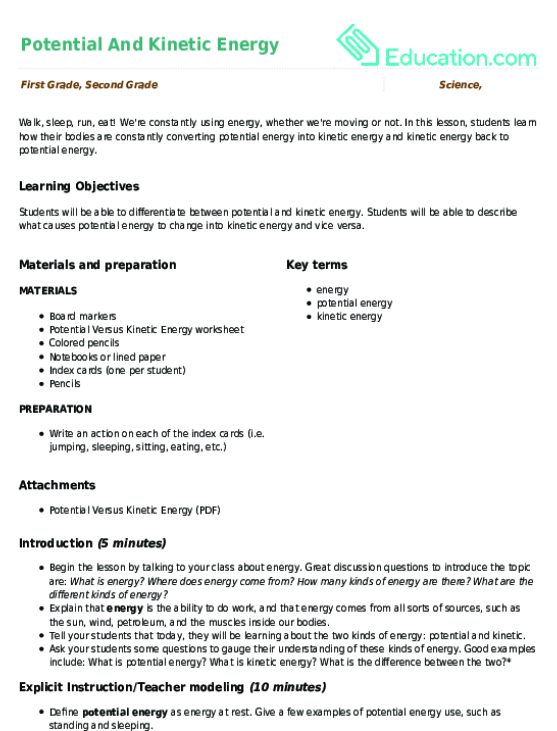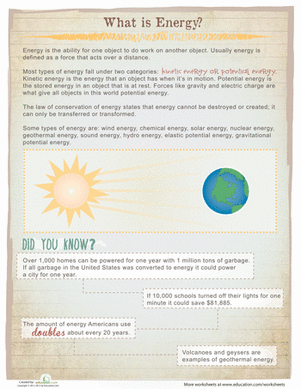Science project
Thermal Energy
Possible Hypotheses:
Thermal energy is/not useful energy that can be used for work.
Materials:
Plastic 1-liter bottle
Large balloon
Bowl of hot (not boiling) water
Bowl of ice water
Small rock
Procedure:
- Cool the balloon and the bottle in the freezer for 5 minutes.
- Fill the bowl with hot, not boiling, water.
- Put the balloon over the mouth of the bottle making sure that the air has been squeezed from the balloon. Place the bottle into the hot water.
- The air inside the bottle should expand and inflate the balloon. After it isinflated, put the bottle in the bowl of ice water and observe it deflate.
- Design a device to convert this expansion and contraction into usable work, such as lifting a rock. Design a device that circulates hot, then cold, water so that the balloon deflates and inflates without moving the bottle.
Analysis and Conclusion:
Were you able to make a device that performed useful work? Can you think of devices that convert thermal energy into motion?
Can you think of a way to convert thermal energy into electrical energy? Research internal combustion engines and turbine generators.
Disclaimer and Safety Precautions
Education.com provides the Science Fair Project Ideas for informational purposes only. Education.com does not make any guarantee or representation regarding the Science Fair Project Ideas and is not responsible or liable for any loss or damage, directly or indirectly, caused by your use of such information. By accessing the Science Fair Project Ideas, you waive and renounce any claims against Education.com that arise thereof. In addition, your access to Education.com's website and Science Fair Project Ideas is covered by Education.com's Privacy Policy and site Terms of Use, which include limitations on Education.com's liability.
Warning is hereby given that not all Project Ideas are appropriate for all individuals or in all circumstances. Implementation of any Science Project Idea should be undertaken only in appropriate settings and with appropriate parental or other supervision. Reading and following the safety precautions of all materials used in a project is the sole responsibility of each individual. For further information, consult your state's handbook of Science Safety.
Education.com provides the Science Fair Project Ideas for informational purposes only. Education.com does not make any guarantee or representation regarding the Science Fair Project Ideas and is not responsible or liable for any loss or damage, directly or indirectly, caused by your use of such information. By accessing the Science Fair Project Ideas, you waive and renounce any claims against Education.com that arise thereof. In addition, your access to Education.com's website and Science Fair Project Ideas is covered by Education.com's Privacy Policy and site Terms of Use, which include limitations on Education.com's liability.
Warning is hereby given that not all Project Ideas are appropriate for all individuals or in all circumstances. Implementation of any Science Project Idea should be undertaken only in appropriate settings and with appropriate parental or other supervision. Reading and following the safety precautions of all materials used in a project is the sole responsibility of each individual. For further information, consult your state's handbook of Science Safety.













